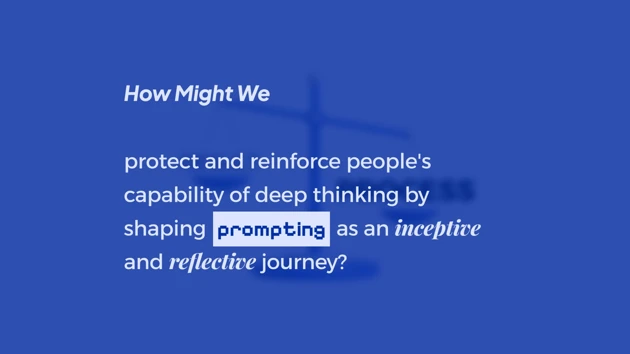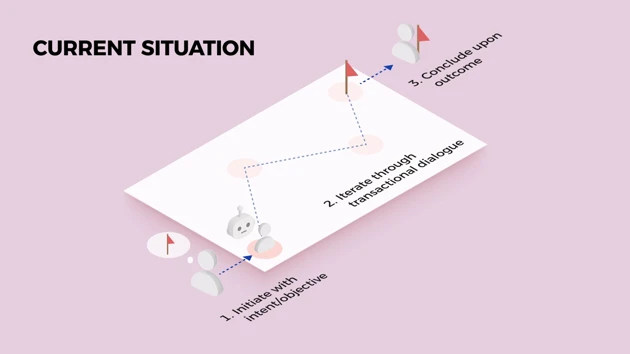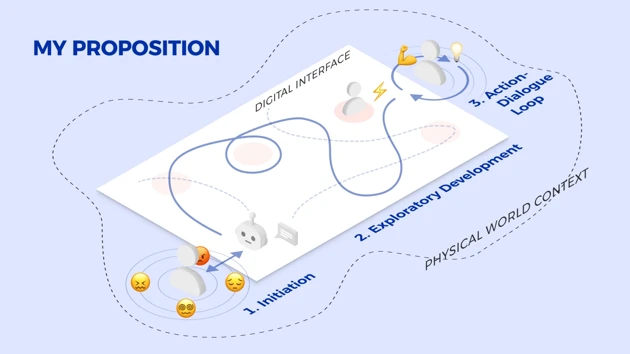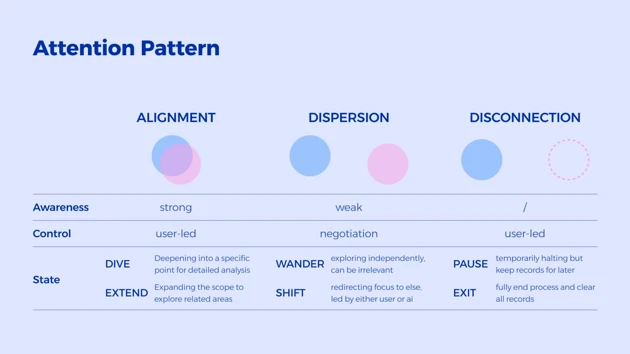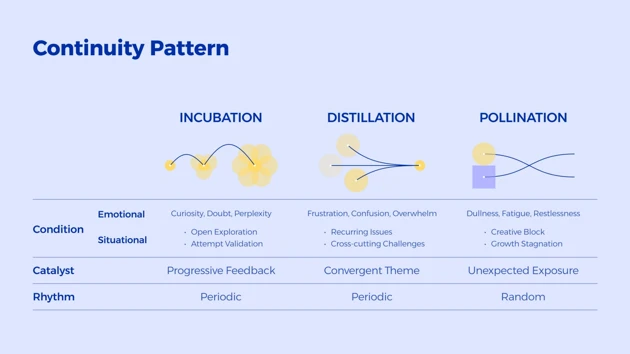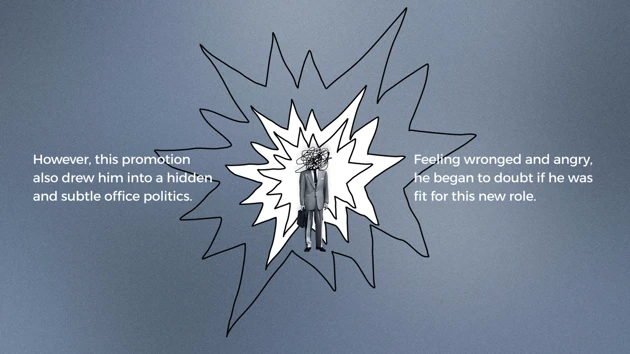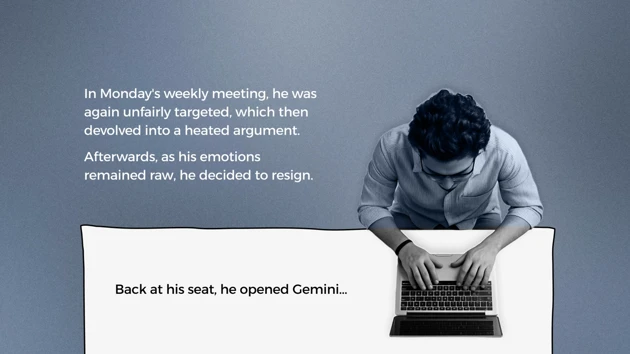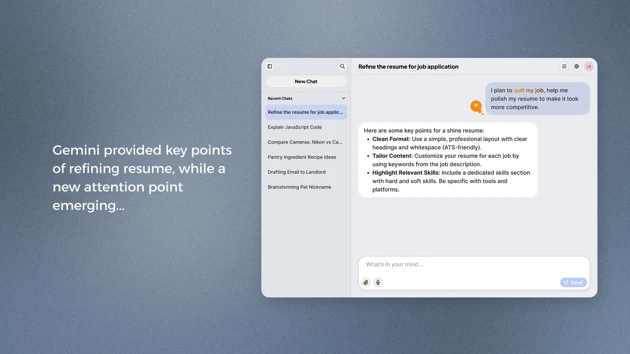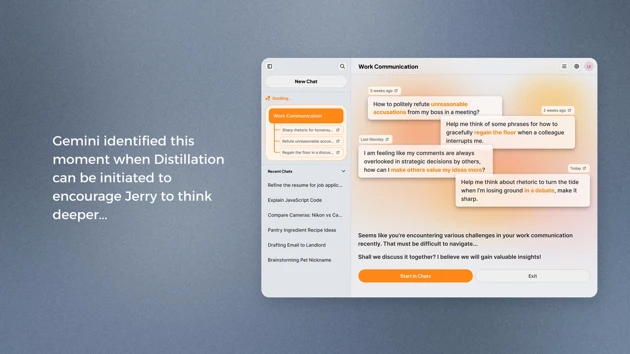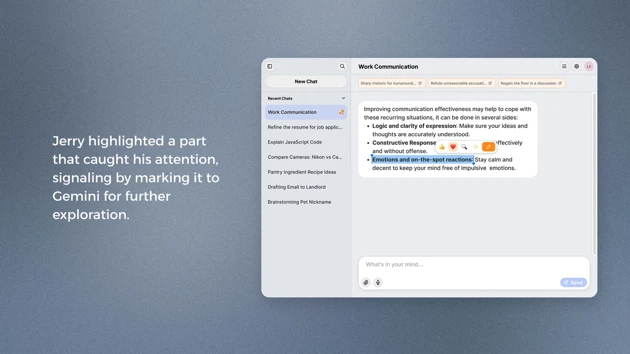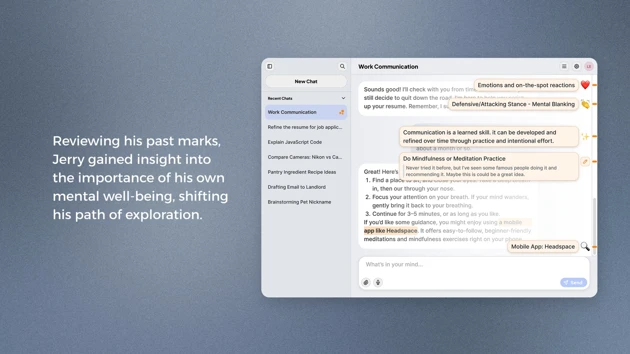UID25 | Lezhi Liang – Grad project presentation
From query to quest
This thesis explores reframing human-AI prompting from a transactional, result-oriented process to an inceptive, reflective journey, fostering deep thinking during moments of uncertainty and blocks. Through Critical Design and Participatory Approach, it develops a set of design principles and a conceptual framework, which challenges the conventional linear "request → refinement → result" model, proposing a cyclical journey that values the thinking process itself. This research also identifies cognitive patterns like attention modes and continuity modes, providing transferable knowledge for designers and practitioners on maintaining human agency in AI-mediated interactions.
Project Information
Advancements in Generative AI, now encompassing sophisticated Reasoning Models and Agentic AI, have expanded capabilities from basic content generation to complex reasoning and autonomous action. However, current interaction designs remain predominantly linear and superficial, prioritizing instant outputs over sustained engagement. This research addresses a critical gap: as AI becomes more capable, interaction paradigms must evolve to maintain meaningful human engagement.
In an era where technology increasingly risks outsourcing our thinking, this work challenges conventional approaches by emphasizing active human agency in cognitive processes, countering passive consumption of AI-generated content. Rather than optimizing solely for efficiency, this project proposes leveraging interaction design to foster deeper cognitive collaboration. The research focuses on text-based conversational interactions with LLM-powered chatbots on personal devices for everyday exploratory use, particularly when users navigate uncertainty with ambiguous intents. This scope enables thorough investigation of fundamental interaction patterns while maintaining practical relevance.
Methods
This research employed a hybrid methodology combining Critical Design and Participatory Design. Critical Design enabled rigorous examination of how current AI interaction patterns influence cognitive behaviors, questioning dominant transactional models to envision alternative possibilities beyond mere optimization. Participatory Design grounded these theoretical explorations in real-world contexts by directly involving users, capturing subjective experiences and emotional states to ensure design concepts remained empathetic and genuinely supportive. Research activities included over 20 in-depth user interviews, critical case studies, generative research kits, and sacrificial prototypes with role-playing exercises, Rather than seeking a single definitive solution, these activities facilitated vivid discovery and rich reflection, allowing for dynamic exploration and feedback loops that shaped the evolving understanding of the problem space and potential solutions.
Result
This project culminated in design principles and a conceptual framework rather than functional prototypes, prioritizing transferable knowledge for enduring relevance in future design practices given AI technology's rapid evolution.
Design principles
Three core principles were developed to define the quality of human-AI interaction and to embed essential ethical values.
- Agency priority positions users as primary drivers of their thinking through negotiable dynamics, allowing timely AI interventions while maintaining user control
- Attention synergy makes mutual attention between user and AI visible and manipulable, enabling collaborative exploration through distinct cognitive modes: Alignment, Dispersion, and Disconnection
- Slow continuity supports thought processes extending beyond single sessions, enabling users to revisit and evolve ideas across multiple dialogues through insight-processing modes: Incubation, Distillation, and Pollination
Conceptual framework
- Initiation addresses entering dialogue with ambiguous thoughts, reframing prompting as "inceptive"
- Exploratory development sustains thinking processes through diverse patterns beyond simple Q&A
- Dialogue-action loop connects digital dialogue with real-world actions, feeding progress back to reinforce long-term thinking
This framework intertwines thought and action across digital and physical contexts, envisioning dynamic partnership where AI supports human thinking and acting amid uncertainty while complementing existing interaction models.


